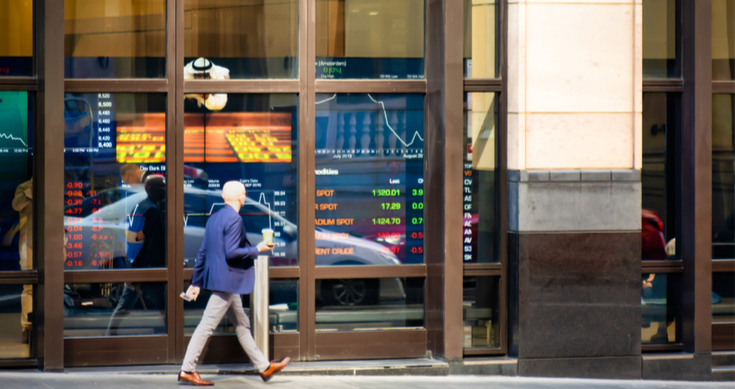This is going to be a non-technical take on volatility. If you are interested in a better understanding of “standard deviation” or “dispersion of returns” then stop reading now.
Volatility for the purpose of this article is an investor watching some or much of their money and wealth moving around a lot. The “vibration” of strategic amounts of one’s wealth is what we are addressing here.
Here are 9 ways of looking at volatility:
1. Liquidity
Volatility is the other side of liquidity, you cannot have one without the other. Funds management has delivered amazing liquidity to investors over the last 30 years. Assets that were previously inaccessible to retail investors are now available via managed funds, ETFs, LICs and a host of other acronyms. But with this comes regular daily pricing and with that comes volatility.
If you let liquidity through the door, you need to allow in its shadow, volatility.
2. Grieving
As assets/portfolios rise and fall we experience something uniquely human. On the way up we feel happy and on the way down we feel as if we have “lost”. Humans have a built in process to deal with loss in the form of grieving. A multi phased, non-linear, process that allows us to ultimately arrive at “acceptance”.
It isn’t just the loss of money that causes this, the real loss relates to losing a sense of financial security, losing peace of mind and losing your vision of your future. These are all legitimate things to grieve over. For small amounts of wealth, this dynamic might not be triggered, but for strategic wealth, even small amounts of volatility can trigger this grieving process.
3. Stress
Stress is not only a mental or emotional response but also a physiological response that has a lot to do with cortisol produced within the adrenal gland. In small amounts cortisol is very useful as it improves memory, immunity and response times but in larger quantities and over prolonged periods (chronic stress) it has a negative effect that includes decreased immunity, increased weight, muscle breakdown and hardening of arteries.
If your investments are causing you regular and ongoing stress, be aware that there is a physiological component to what you are feeling.
4. Bad investor behaviour
Investors are inherently bad at investing.
Normal human psychology is at odds with the long terms demands of successful investing. Volatility amplifies this negative dynamic. The more of it there is in one’s life, the more likely that people will make a poor decision.
This dynamic is easy to witness whenever research is done on the difference between fund returns and the returns achieved by investors in those funds. A fund may return 7% p.a. over 10 years but very few investors would ever have achieved that because they would have entered and existed at all the wrong points.
Another way of looking at this is that increased volatility increases the transfer of wealth from the impatient to the patient. Those that cannot hold on to those that can.
5. Quantum
Volatility itself is not the problem, it is the quantum we allow into our lives and portfolios. Is it just tactical volatility (small and irrelevant to our financial well-being) or strategic volatility? There is no accurate amount, it is an inherently personal answer and one that has a lot to do with what is generally called a “risk profile”.
6. Excessive liquidity
Too many people have too much liquidity. The ability to cash out all of ones investments at the drop of a hat with barely any cost sounds appealing but ultimately is not only redundant, but dangerous to the extent that it invites bad strategic decisions in times of crisis.
7. Bad language
Volatility lends itself to bad language. Bad language lends itself to bad ideas and a bad idea lends itself to a bad act.
Your portfolio is inflating (rising) because one of the underlying markets is running in your favour, examples of bad language are:
• I made 15% last year
• I am making 15% at the moment
Until the wheel stops turning, you are still on the roller coaster and have made nothing. You need to take your money off the table to have “made” anything. Temporary rises and falls don’t mean that you have made or lost anything.
If someone pays you rent or a company paid you a dividend that is money you have “made”. Income is real and asset movement is transient.
8. Money flow
Ease of money flow amplifies the swings. If large volumes of money can enter and exist a market with little cost, the swings in asset prices will be amplified on both sides of the equation. For example, stamp duty and real estate agents reduce the speed of entry and exit of money into property and are partly responsible for the more stable characteristics of property.
While we are on property, if there was a daily valuation of your property showing on your letter box, you would look at it every day when you left home and it would determine the shape of your emotions for the rest of the day. Up one day and down the next, ecstatic one day and depressed the next. After a while you would stop looking because you couldn’t take it anymore.
9. Computers
If you want to understand more about how computers and high frequency trading are part of today’s markets, I recommend you read Michael Lewis’s Flash Boys.
It is a new phenomenon and when combined with the huge volumes of capital moving around with ease within the system, are contributing to overall higher levels of volatility in markets.









